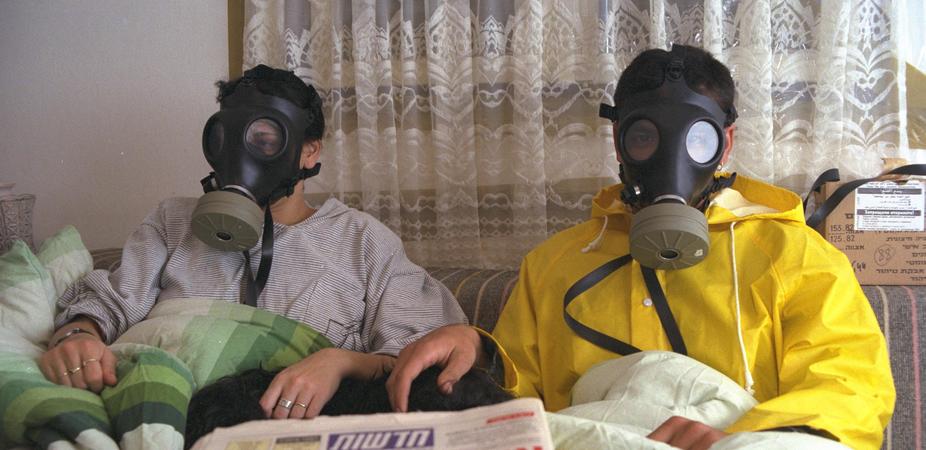
Households Are New Source of Antibiotic-Resistant Superbug

This article was originally published at The Conversation. The publication contributed the article to Live Science's Expert Voices: Op-Ed & Insights.
Human skin is a garden of microbes which is home to about 1,000 bacterial species. Most are benign but some invade the skin and cause illness – and of these, antibiotic resistant bacteria are particularly dangerous.
We normally associate these resistant bugs with hospitals, but new research finds that they could be living and spreading in households and within communities, too. For a notorious resistant bug, scientists have also been able to pinpoint where in the world it first began spreading. The hope is that this knowledge will allow better way of controlling infection and stopping epidemics.
The Staph of nightmares
About one in five humans carries the disease causing bacteria Staphylococcus aureus, or Staph, on the skin without any problem. However, breached skin, surgical wounds, or low immunity, as in HIV infection or cancer, may allow Staph to cause diseases ranging from minor skin ailments to major threats to life.
The emergence of methicillin-resistant Staphylococcus aureus (MRSA) is well-known. Originally associated with only bacterial infections in hospitals and nursing homes, MRSA is now known to colonise the skin of otherwise healthy individuals – such infections are called “community-associated” (CA-MRSA).
CA-MRSA spreads by contact with an infected individual. That is why, the spread of CA-MRSA can occur in households, where the spread between house members is difficult to control resulting in high rates of recurrent infection. This is often due to contaminated household objects such as shared razors, towels and door knobs.
Global epidemic
While the presence of Staph on skin has long been associated with infection, two features make CA-MRSA riskier. It can cause severe disease in previously healthy people – in fact, in about one in every ten cases, CA-MRSA infections leads to deadly pneumonia, severe sepsis, or the dreaded “flesh-eating disease” (a.k.a. ‘necrotizing fasciitis’). It also has the ability to spread rapidly, which has resulted in a global epidemic.
Sign up for the Live Science daily newsletter now
Get the world’s most fascinating discoveries delivered straight to your inbox.
The global epidemic has been attributed to a single CA-MRSA microbe, known as USA300. In the US it is responsible for infection outbreaks in 38 states, and it has spread to Canada and several European countries.
Studies of USA300 have found molecular evidence which points to its ability to evolve into more harmful versions.
USA300’s invasion of community households is less well understood. This is what Anne-Catrin Uhlemann at Columbia University Medical Centre and her colleagues wanted to investigate. In a paper in the Proceedings of the National Academy of Sciences they have successfully used “whole-genome sequencing” on Staph cells from 161 CA-MRSA-infected residents in New York city in order to reconstruct USA300’s evolutionary history.
Whole-genome sequencing takes a snapshot of an organism’s complete genetic make-up, known as the genome, and determines the DNA sequence of all genetic material. Uhlemann used genomic sequencing and health statistics to gain insights into USA300’s spread during a period covering 2009-2011.
They looked for small changes in the genome, which often give clues as to how the cell evolved. After investigating more than 12,000 small changes in the USA300 genome, the authors reconstructed the genetic history. This helped them determine that USA300 first arose around 1993. The molecular signatures allowed them to also home in on the geographic location where this happened, which they determined to be in northern Manhattan.
Sneaky bug
Detailed study of USA300’s genome showed it acquired antibiotic resistant genes from viruses that infect bacteria. This allowed the genetic adjustments necessary for USA300 to become harmful. The authors also discovered a smaller subgroup of USA300 resistant to another antibiotic-class, fluoroquinolones, which appeared to emerge around the time when fluoroquinolone prescription rates had soared in the US.
All this information put together shows that USA300 evolved and spread in households and communities in New York city. The occurrence of different antibiotic-resistant bugs highlights the effects of overuse of antibiotics. But working out how CA-MRSA spread within households and inside communities may help devise an infection control strategy to break the pattern of spread and reduce the possibility of another large-scale outbreak.
All viewpoints expressed in the article are those of Kausik, and do not necessarily represent official positions of the Johns Hopkins Medical Institutions and the Johns Hopkins University.
This article was originally published on The Conversation. Read the original article. Follow all of the Expert Voices issues and debates — and become part of the discussion — on Facebook, Twitter and Google +. The views expressed are those of the author and do not necessarily reflect the views of the publisher. This version of the article was originally published on Live Science.









